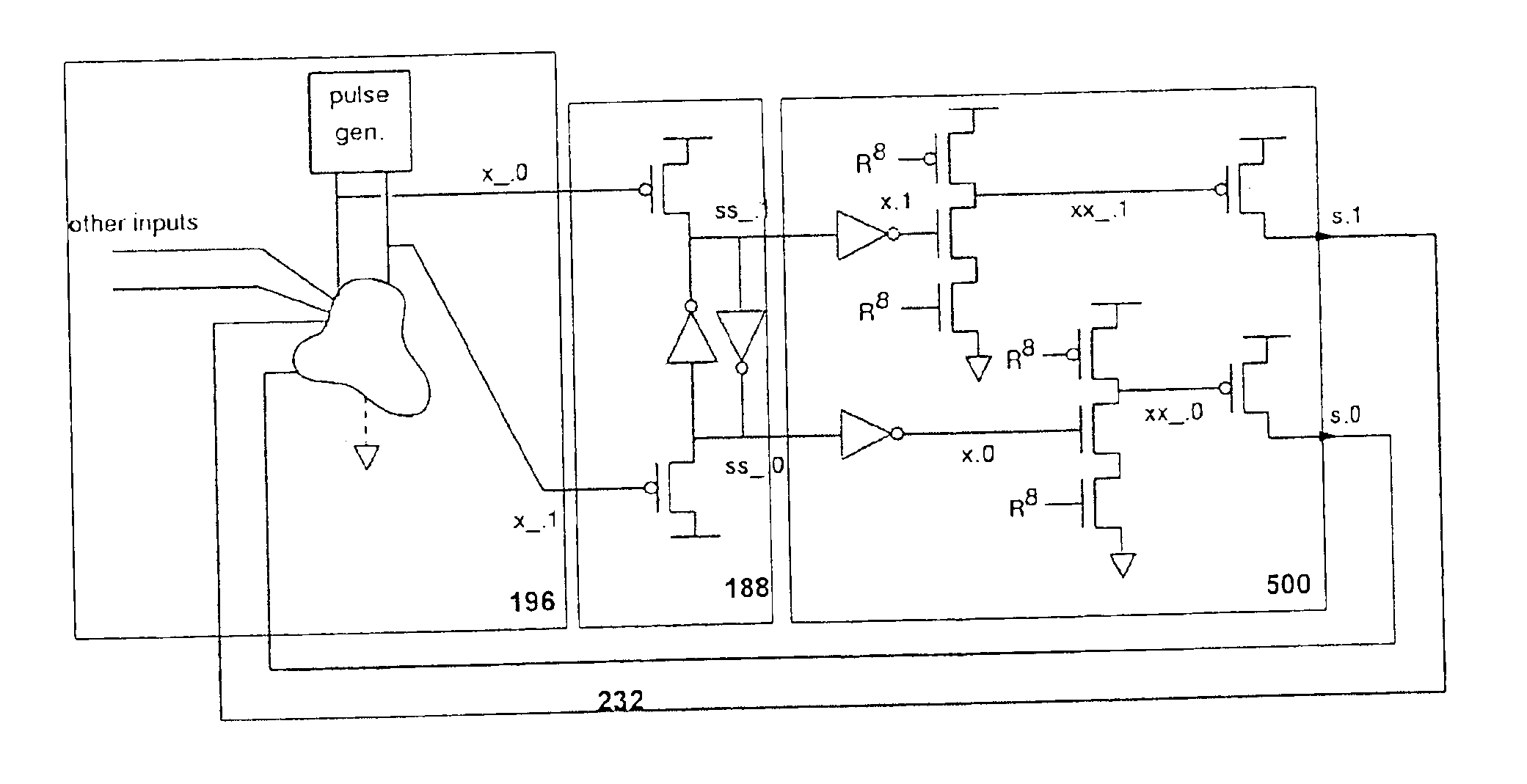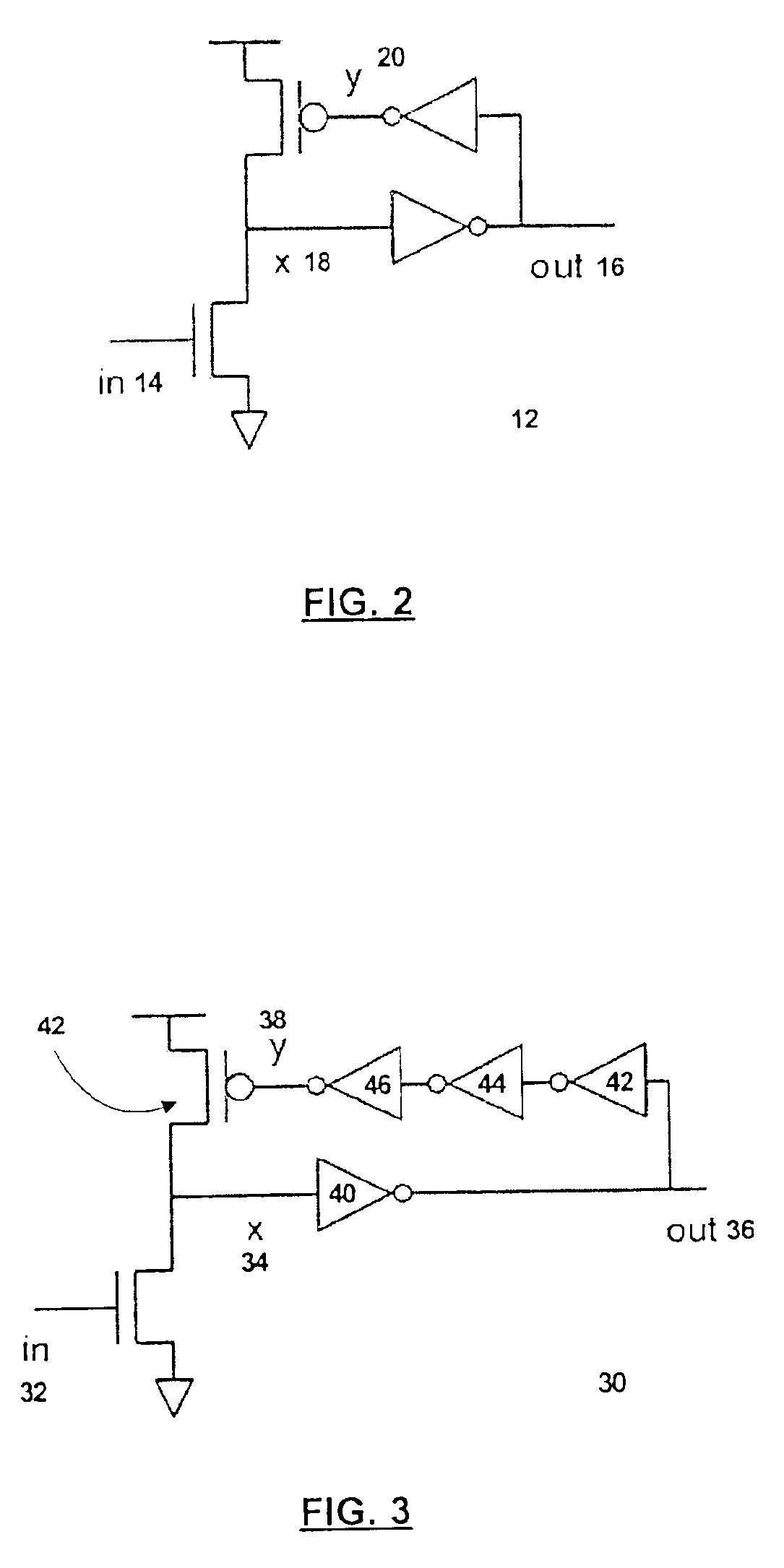Method and apparatus for an asynchronous pulse logic circuit
a logic circuit and asynchronous technology, applied in the field of logical circuit design, can solve the problems of c and limiting our imagination or dampening our enthusiasm, poor performance is usually unacceptable for a vlsi system, and exercise is pointless, and achieves the effect of less loading and simplified solution
- Summary
- Abstract
- Description
- Claims
- Application Information
AI Technical Summary
Benefits of technology
Problems solved by technology
Method used
Image
Examples
Embodiment Construction
[0083]The present invention is an asynchronous pulse logic circuit and methods of designing such a circuit. Embodiments of the present invention comprise of a family of circuit design called the single-track-handshake-asynchronous-pulse-logic (STAPL) circuit. In the following description, numerous specific details are set forth to provide a more thorough description of embodiments of the invention. It is apparent, however, to one skilled in the art, that the invention may be practiced without these specific details. In other instances, well known features have not been described in detail so as not to obscure the invention.
[0084]The present invention aims at establishing a new target for hardware designers. Embodiments are circuits designed according to an asynchronous, pulsed-logic design-style that depends on timing assumptions for working properly, which quasi delay-insensitive (QDI) circuits do not.
[0085]To describe the present invention, we shall use much of the same terminolog...
PUM
 Login to View More
Login to View More Abstract
Description
Claims
Application Information
 Login to View More
Login to View More - R&D
- Intellectual Property
- Life Sciences
- Materials
- Tech Scout
- Unparalleled Data Quality
- Higher Quality Content
- 60% Fewer Hallucinations
Browse by: Latest US Patents, China's latest patents, Technical Efficacy Thesaurus, Application Domain, Technology Topic, Popular Technical Reports.
© 2025 PatSnap. All rights reserved.Legal|Privacy policy|Modern Slavery Act Transparency Statement|Sitemap|About US| Contact US: help@patsnap.com



